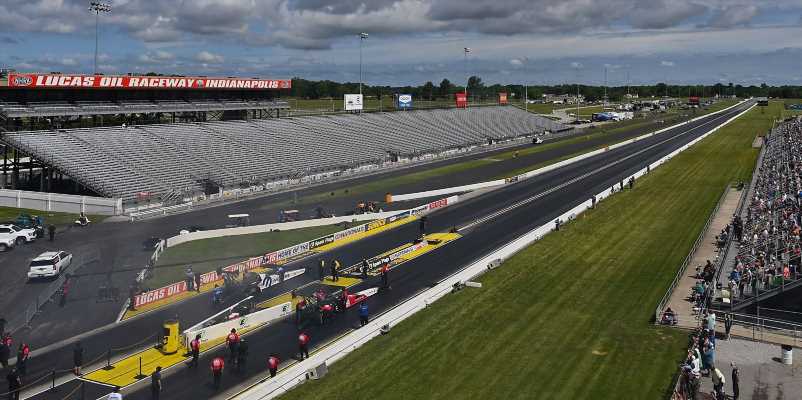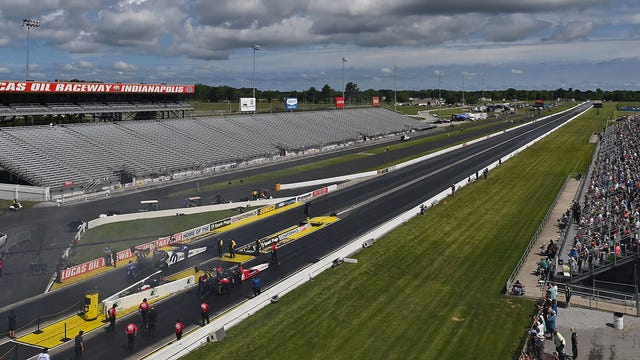Traditionally, a drag strip is 1,320 feet, which equals a quarter-mile. (One mile equals 5,280 feet.) Many classes in NHRA drag racing—actually, all but the Top Fuel and Funny Car classes—still compete on a quarter-mile course.
Top Fuel and Funny Car, the two nitromethane-fueled classes in the NHRA Camping World Drag Racing Series, scaled back to 1,000 feet in mid-2008, following Funny Car driver Scott Kalitta’s death in a crash during qualifying. The accident happened June 21, 2008, the fourth and final session of qualifying for the Lucas Oil NHRA SuperNationals. Eleven days later, the NHRA announced it would shorten the course for the Top Fuel and Funny Car categories to 1,000 feet (which had been the final electronic time and speed clocking increment in the scoring system).
Antron Brown, a three-time Top Fuel champion, said, “That’s when they changed the whole dynamics of the sport forever.”
At the time, it was considered an interim step for the NHRA to take. The thought was that would allow the cars more time to slow down (from a slower speed than they customarily would have been traveling) and an extra 320 feet of shutdown area.
Kenny Bernstein, president of the Professional Racers Owners Organization (PRO), said the group’s board members “wholeheartedly and unanimously support this decision” after sharing input into the discussion. He said, “It is not lost on any of us that this constitutes a change in our history of running a quarter-mile, but it’s the most immediate adjustment we can make in the interest of safety which is foremost on everyone’s mind. This may be a temporary change, and we recognize it is not the total answer. We will continue to work hand in hand with NHRA to evaluate other methods of making Top Fuel and Funny Car competition safer so that we might return to our quarter-mile racing standard.”
That hasn’t happened. The finish line remains at 1,000 feet, although purists for the sport occasionally have raised the suggestion to return to quarter-mile racing. It does not appear likely the NHRA will reverse its decision.
The sanctioning body issued a prepared statement July 2, 2008, that said, “In the wake of the tragic series of events that took Kalitta’s life, the following technical issues are currently under investigation: 1) what might be done to reduce engine failures; 2) parachute mounting techniques and materials as well as identifying a parachute material that could be more fire resistant; 3) exploring whether there is a way to increase brake efficiency when cars lose downforce due to the loss of the body; 4) analyzing additional methods that might be developed at the top end of the race track to help arrest runaway vehicles; 5) considering whether current speeds should be further limited or reduced to potentially improve safety.”
The mission was “to investigate, analyze and determine ways to implement the initiatives recently outlined by NHRA to continue to enhance safety.” The committee appears to have disbanded long ago, but the NHRA, of course, continues to institute various safety measures as it deems appropriate.
Source: Read Full Article



